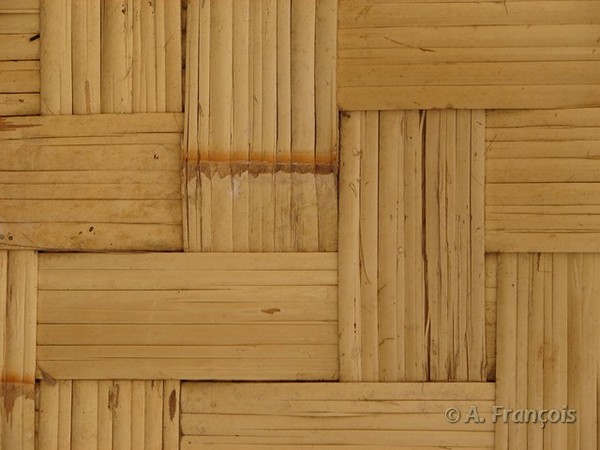pah pah
<°basoMotapaso
Averb, intransitive
end, finish
| Mat pah.It's over. |
| Ne gi mak pah dën li gemël.There's no kava left [kava has finished] in the men's house. |
| Ne vegevag' in ni pah pe nōk.closing formulaAnd this is how the story ends. |
antonymdarake
BTense Aspect Mood marker
after verb V1finish (doing V1); [in a sequence of clauses] do V1 first (then do V2), hence after doing V1…
| Dōr wiēne pah, g' ake gengën.We'll have dinner after the kava. [lit. we'll ‘finish’ to have kava, then eat] |
| Hōr not pah ne gerite, ōr pi n' ëv.They (first) knocked out the octopus, and then lit a fire. |
Csubordinator
this being finished…so, then
| Dege toge sëh të ne gengën vë howse pah, pah dege ge holul.We wait till the food is done, and then we open the oven. |
synonympah vēn
Dadjective
Grammar
all, every
| dege pah (rēt)all of us |
| hen̄were paheverybody [all people] |
| ne volgë pah / n' ēve paheverything [all the things] |
| vol-venie pahin all countries |
| vol-venone pahin every moment, always |
| Deda pah rēt.It's not all of them. |
📙 Intensif pah rêt.
📘 Intensifier pah rēt.
pah vēn pahβen
pahvēn
pah wë ne
subordinator
pale qetune palə kʷətʉnə noun, relational
Cf. qetu ēn̄we ‘ridgepole’
Architecture
ridge beam, lying underneath the ridgepole (qetu ēn̄we)
seegesir parehë
see lexical list atēn̄we ①
pu pʉ noun
Anthropology
a grade or rank, in the traditional system of graded societies (ne huqe)
| ne pu rav tuwtōwthe first grade (in the hierarchy) |
| ne pu pehpahvëinthe last grade |
| ne pu dedētthe lower grades |
| ne pu heghagthe higher grades |
| n' iē pu pah wë ve toge li gemëlthe name of all the ranks which are represented in the men's clubhouse |
📘 Each rank constitutes a step on the ladder of grades (ne huqe), from the lowest to the highest. The hierarchy of these ranks is reflected in the internal layout of the men's clubhouse (ne gemël): the latter is divided into several compartments which are separated by impassable logs (See petpit). See_box_at gemël*.
